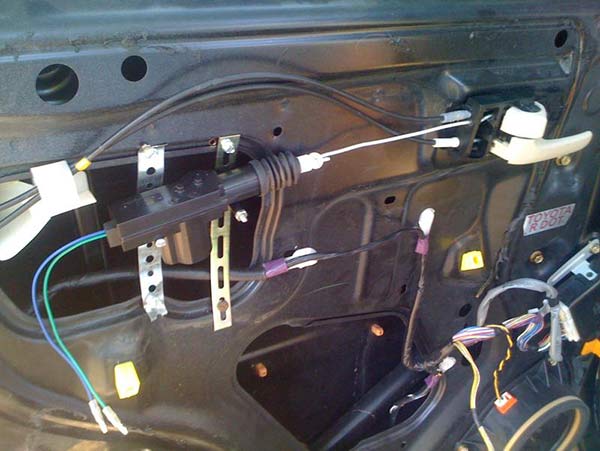The electronic door lock actuator is a component that locks and locks/unlocks the door in a car with an electric lock. There may be several reasons why the door lock actuator may need to be replaced:
Worn out door lock actuators will produce a buzzing noise during the lock/unlock operation. When all other door locks are working, failure of the door lock actuator will cause the door lock to fail to work.
How to start diagnosing door lock actuators
According to the year, make and model of your vehicle, the electric door lock can be independent, controlled by the door lock controller or controlled by the body control module. If your vehicle is equipped with a separate door lock controller for the body control module, these units usually cannot lock/unlock all door lock actuators, not just one. If only one door lock actuator is not working, it is probably not a control module (but there are exceptions). If you encounter the problem of inconsistent door lock operation and your actuator is controlled by a module, please unplug the fuse of the module first, and then reinstall it in a few minutes. This can correct common software failures in vehicles (especially Chrysler products) from the late 1990s to the mid-2000s. If your power door lock starts to work normally after the fuse is reset, you have two options: when the door lock fails again, you can unplug the fuse and reset it, or you can take it to the store and update the door lock software To correct the problem.

How to test the door lock actuator
For diagnosis, you may need to remove the door cover according to the wiring diagram, check the door lock linkage and test the voltage of the door lock actuator. Measure the voltage when the power lock button is pressed. If there is voltage but the actuator does not work, the door lock actuator is broken and needs to be replaced. If no voltage is present when the power lock switch is operated, the electrical diagram must be used to further trace the problem. It may be the main door lock switch, the door harness is damaged, the connector is damaged, the control module is faulty, or just the fuse is blown.
How can you tell which door lock actuator causes the alarm to go off?
If you suspect that one of the door lock actuators caused the alarm to sound in rainy weather, the first step is to check the weather strip above the door lock.
If the sealing strip directly above the door lock actuator is not properly sealed, water may enter the door lock actuator.
You can see the gap in the weather strip, which is the easiest way for water to enter the inside of the door lock actuator below. By sealing these gaps in all doors and lubricating the door locks and trunk/tail door locks, the random alarms that sounded in the car on rainy days were fixed.
Check whether all the doors are closed smoothly and whether the "Door Ajar" light goes out every time the doors are closed. If the light sometimes stays on and sometimes goes out when one of the doors is closed, the switch on that door may be the culprit. If any door locks look rusty, it is best to lubricate them with a suitable liquid lubricant.
If no obvious fault is found, this problem can be diagnosed at your dealer. In some cars, you can use the dealer scan tool to see which door (or trunk or hood) has triggered the alarm the last few times. If the scanning tool shows that the same door has triggered multiple alarms, the door lock connector and actuator must be checked. Usually, replacing the affected door lock actuator can solve the problem.













